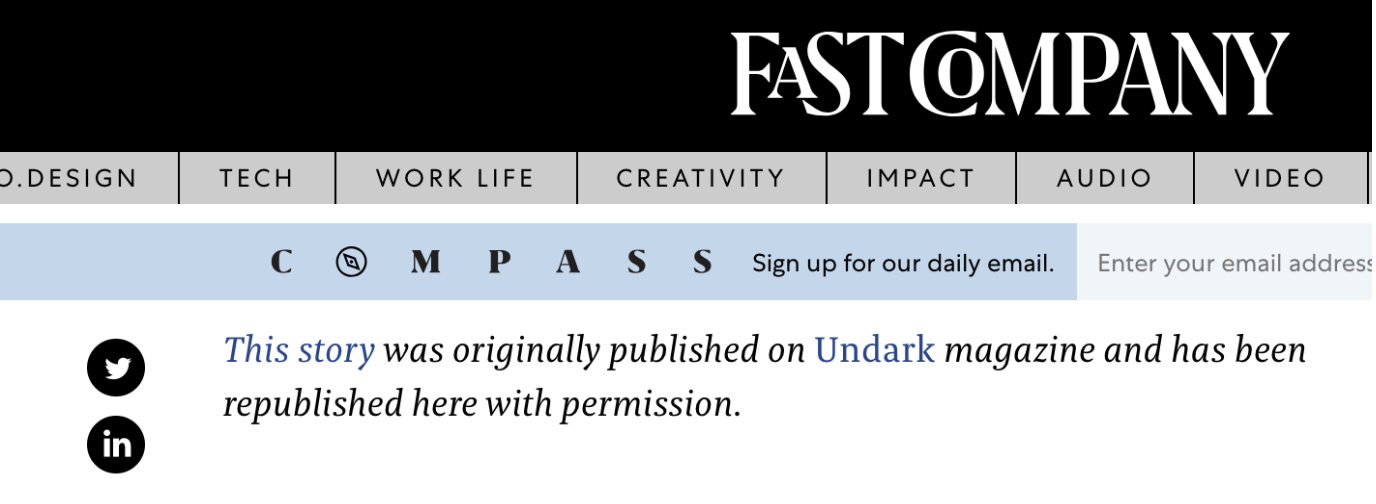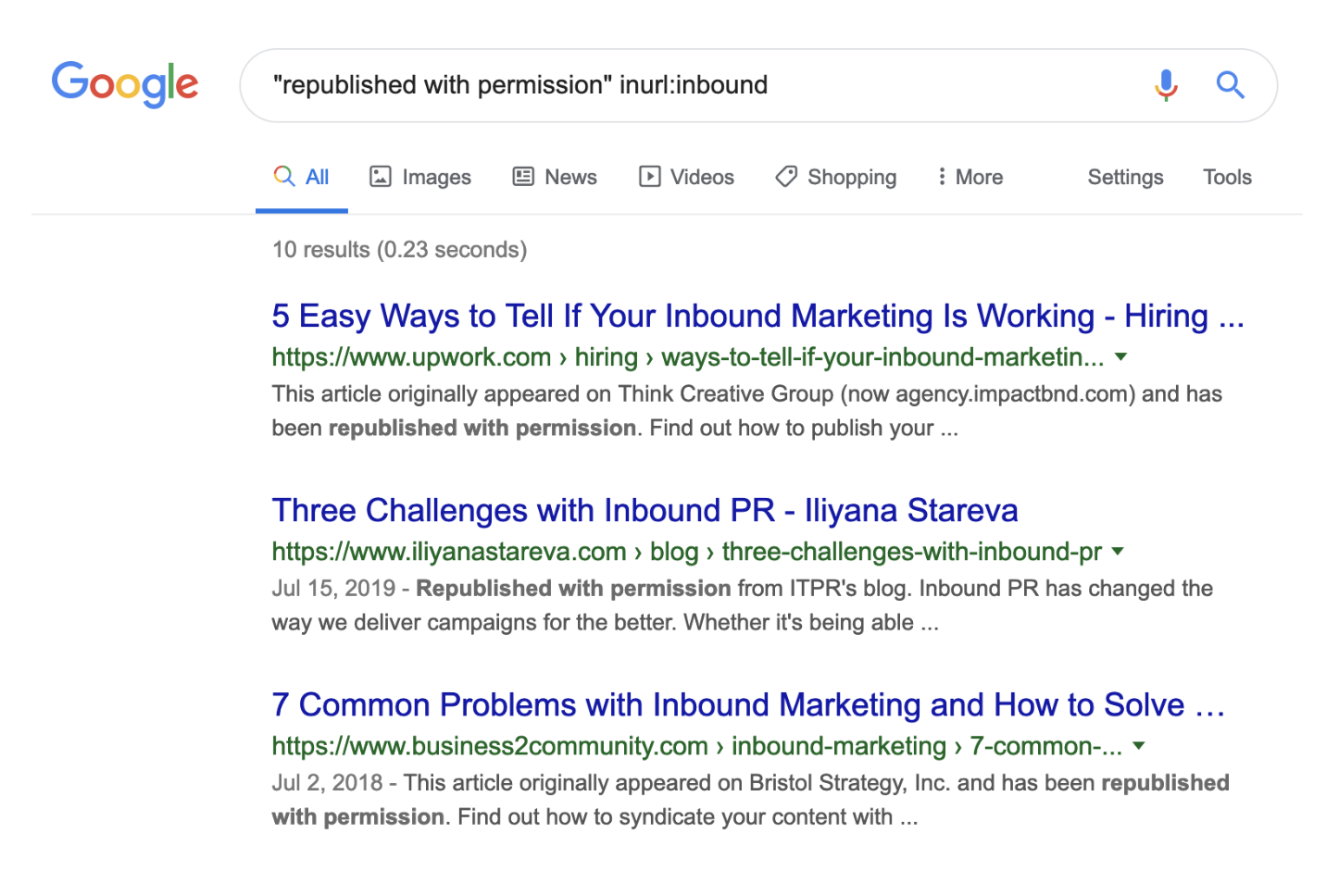You worked a lot to create great content. You posted it on your blog, on your social media accounts, and ensured it's optimized for search engines.
But the views and subscribers aren't where you'd like them to be.
If it's any consolation, know that getting traffic is actually a common problem for most marketers. And while there are many ways to get those numbers up, content syndication stands out because it's really cost-effective, helps you boost brand awareness, and improves SEO performance.
That's if you do it right, of course. Otherwise, you risk being outranked by other publications with your own content. Additionally, you could end up negatively impacting your SEO performance by picking the wrong website to syndicate on.
At this point, you might be wondering -- what's the best way to use this tactic, and how can I avoid the drawbacks?
In this blog post, I'll show you content syndication best practices you need to be aware of to make this tactic work for your business.
But first, let's talk about what content syndication really is (and what it's not).
It's important to note that, although it might seem similar, content syndication is not the same as guest blogging. A guest post is a completely new piece of content, written specifically for one publication. Syndicated content is literally taking the same piece of content and republishing it, with permission, on other platforms.
From the reader's perspective, one can tell if an article was syndicated, and not a guest post, because there's usually a mention on the page about the original source. Typically, publications mark syndicated piece with text like this:
"This article originally appeared in [Original publication + Link]."
OR
"This article appeared in [Original publication + Link] and has been published here with permission."

This is a very important mention, not only for giving credit to the original author but also to avoid duplicate content issues.
Content Syndication and SEO
As you probably know, Google doesn't like duplicate content.
It won't penalize a website directly for duplicate content, but it might not help with their SEO performance, either.
The good news is that syndicated content isn't the same as duplicate content. Even Google says it's OK to syndicate content, as long as you do it carefully and make it obvious for search engines and readers that what they see is a syndicated piece. You can do that by including a link back to the original article and, ideally, getting the third-party publication to include a canonical link.
Read more: Canonicalization 101: Everything You Need to Know About Canonical URLs
How you add the canonical link typically depends on the publication. If the process is not clear, it's something worth discussing with the editor from the very beginning.
Additionally, let's not forget about the references (links) included within the content. Again, each publication has its own guidelines about references, so it's good to discuss this with the editor before starting a partnership. But if you can reference your own content, a syndicated article can be a driver of referral traffic and a way to improve your rankings and organic traffic performance.
Scott Mathson, Senior Web Strategy and SEO Manager at Auth0, says that "if you include internal links, content that you syndicate across platforms often passes authority and equity through to these links. Signals from an increase in traffic from new and different referral channels, alongside a broadened backlink profile (whether nofollow or follow), and other factors gives search engines further context around your content and its relevancy and popularity."
Scott has seen how content syndication can impact a website's SEO performance (directly and indirectly). Over the past two years, he's used content syndication (among other tactics) to grow the website's backlink profile from 200K to over 4.4 million backlinks.
Now that we have the basics covered, here's how to do content syndication successfully.
There are two ways to go about content syndication -- free, or paid. The free way means you focus on finding the right publications, pitching your content, and building partnerships, one at a time. The paid solution means using tools that allow you to get your content recommended in major publications more quickly.
Here's everything you need to know about both free and paid content syndications methods.
Free Content Syndication
There are four main ways in which you can syndicate your content for free:

- Republish your latest or best-performing content on bigger websites, with more readers and higher authority than yours. When you syndicate to a bigger publication, you amplify your reach. However, since readers can consume the entire piece of content directly on the third-party website, there's little incentive for them to check out the original source. So only a small percentage of the readers will visit your website. That said, if your main goal is to increase your brand awareness, then syndicating on major publications is the way to go.
- Syndicate old content on websites that have roughly the same audience and authority as yours. If you want to focus more on a niche audience, then you should consider syndicating content to smaller, more focused publications. Ideally, look for publications with similar authority and readership as your blog. They might also allow more contextual links so you can reference back to your blog from the article. It's a great way to let their readers discover more content on your blog and generate new leads.
- Guest post on a bigger publication and syndicate later on your website, Medium, or LinkedIn. Sometimes it's worth publishing on a big site first, as they might only be interested in fresh, original content. You get the benefit of getting your thought leadership in front of a big audience that otherwise wouldn't have reached your content. After a while, depending on the publication, you're free to republish that piece to your audience and social channels. Basically, you get more bang for your content buck.
- Get picked up by websites that naturally syndicate content. If you take the title of a recent article from a big publication and type it into Google, you'll see it's been picked up by many small publications. These usually publish an excerpt from the original piece and link back to the source.
Here's an example:

To make your blog more visible, try first creating a page where you explain how people can syndicate your content. This "steal our content … please" page from UniverseToday.com is a good example of how to go about it.
Then, make sure you optimize your website for syndication.
Scott Mathson told me, "Syndication often relies on feeds and sitemaps, so take the time to focus on optimizing your website's posts feeds, sitemaps, and other XML files to ensure it is valid and in line with guidelines for various publishing platforms. Once optimized, setup the connections for automating syndication, whether through setting up connections to sitemaps and feeds or through developing API connections to various syndication sites. Setting up this automation for cross-posting your content to sites like Flipboard saves time in the long run."
Lastly, give other publication a reason to syndicate your content either entirely or partially. For example, include charts, infographics, or diagrams that can easily be picked up and syndicated.
"Presenting key statistics, tips and takeaways from your content in a visual format, like an infographic or slidedeck, can make your content more attention-grabbing. Even if sites don't want to syndicate an entire article, they may still be open to sharing your visual content, since it can complement their existing piece and help boost the engagement on their page," said Sara McGuire, Content Lead at Venngage, where they used visual content to grow their site traffic by 400%.
In this next section, you'll learn how to find publications where your competitors' syndicate content, which ones to choose, and which to avoid.
How to Find Content Syndication Partners
There are numerous tools you can use, including BuzzSumo, Ahrefs, SEMRush -- just to name a few. You can check any website's latest backlinks for content syndication opportunities.
Most likely, the easiest place to start is a Google search. Look for articles that mention:
"originally published in"
"republished with permission"
"originally appeared on"
To narrow your search to publications in your niche, add inurl:[domain] to your search. Here's a real-life example of inbound blogs that syndicate content:

When selecting publications, look for the ones that have:
- similar or better authority than your blog
- a readership that's similar to your buyer persona
- canonical links to original articles
There are also publications you need to stay away from. Publishing there might ultimately harm your brand and SEO performance. Make sure you avoid publications with:
- low authority
- spammy outbound links
- no clear editorial guidelines
To help you get started, I've put together a list of websites where you can syndicate content right away.
Paid Content Syndication
Paid content syndication is, well, when you pay to be published.
The most common form of paid syndication has been around for a while. Big brands often collaborate directly with big publishers and get their content in front of a big audience. This tactic, however, wasn't available for smaller brands with a more limited budget.
Fortunately, there are now tools like Outbrain and Taboola which make it possible for even smaller brands to appear as recommended content on sites like CNN, BBC, or The Guardian.
You've probably seen these ads before:
 The way these platforms work is pretty much like any PPC campaign. You can set a capped budget, a cost-per-click, and a target audience. Then the platform serves readers with your ad as a recommended article, featuring an image, a short title, and a link back to your website.
The way these platforms work is pretty much like any PPC campaign. You can set a capped budget, a cost-per-click, and a target audience. Then the platform serves readers with your ad as a recommended article, featuring an image, a short title, and a link back to your website.
It's probably worth mentioning here that these links don't carry any SEO authority. They are seen as "sponsored content" by search engines, and sometimes by readers, too.
Every time a reader clicks on one of these ads, you are charged a cost that varies depending on the target audience and other campaign settings.
That said, paid syndication is a much more straightforward option to get your content featured in major publications. It's probably also the only way to get your content on sites like CNN. However, paid doesn't give you the same SEO and even brand awareness benefits as free syndication.
Ultimately, content syndication is a fantastic opportunity to reach a new audience and potentially convert those readers into leads. Additionally, if you syndicate other publication's content on your own site, you're able to serve your readers fresh, valuable content without requiring them to leave your site to find it elsewhere.
from Marketing https://ift.tt/2l3VC7A

No comments:
Post a Comment